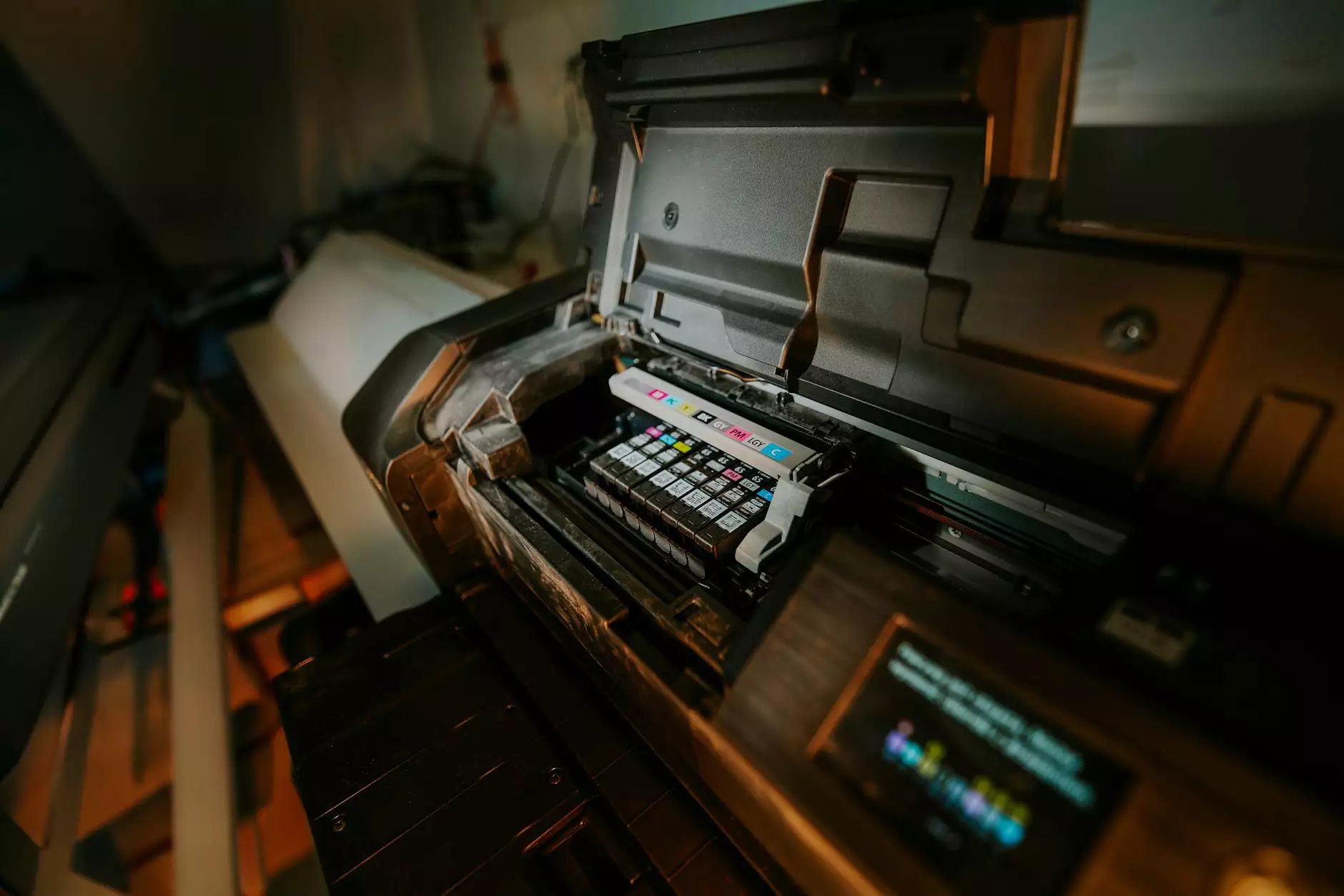Understanding Inkjet Ink: A Comprehensive Guide for Businesses

In the fast-evolving world of printing services, understanding the nuances of inkjet ink can significantly impact the quality and cost-effectiveness of your printing projects. Whether you run a small office or manage a large printing business, the quality of your ink and printing supplies can determine your success in delivering exceptional prints. In this guide, we will delve deep into the world of inkjet ink, examining its components, types, applications, and tips for choosing the right one for your needs.
What is Inkjet Ink?
Inkjet ink is a fluid used in inkjet printers to produce images and text on various media. This ink is specially formulated to be ejected from tiny nozzles in printer cartridges, creating precise dots that combine to form high-quality prints. Unlike other printing methods, inkjet technology allows for intricate designs and vibrant colors, making it a favorite among graphic designers, photographers, and businesses seeking high-impact visuals.
The Components of Inkjet Ink
Understanding the components of inkjet ink can help businesses choose the right type for their printing needs. Here are the primary components:
- Pigments and Dyes: These are the primary coloring agents in inkjet ink. Pigments are insoluble particles that provide better fade resistance and longevity, while dyes are soluble and are often chosen for their vibrancy.
- Solvents: This is the liquid component that carries the pigments or dyes. It can be made from water, alcohol, or other chemical compounds.
- Additives: These are added to enhance ink performance, including surfactants (to improve spreading and penetration), preservatives (to prevent microbial growth), and stabilizers (to avoid settling or clumping).
Types of Inkjet Ink
Not all inkjet ink is created equal. Depending on your specific needs and printer compatibility, you may encounter various types of ink:
1. Dye-based Ink
Dye-based inks are known for their rich colors and smooth gradients. They dissolve in liquid, allowing for greater color vibrancy and saturation. This type of ink is ideal for:
- Photographs and graphics where color accuracy is paramount.
- Documents printed on standard, inexpensive paper.
However, dye-based inks are less resistant to water and UV light, which can lead to issues in longevity.
2. Pigment-based Ink
On the other hand, pigment-based inks offer superior durability and colorfastness. They are composed of larger molecules that sit on the surface of the paper rather than being absorbed, making them:
- More resistant to fading, bleeding, and water damage.
- Preferred for archival-quality prints and professional applications.
3. Sublimation Ink
Sublimation ink is a specialized type formulated for transferring designs onto materials like fabrics and ceramics. This ink changes from a solid to a gas when heated, allowing it to bond with the surface. Businesses involved in custom apparel or promotional items often utilize sublimation ink.
Choosing the Right Ink for Your Business
Selecting the right inkjet ink is crucial for maximizing print quality and minimizing costs. Here are some recommendations:
- Assess Your Printing Needs: Determine whether you prioritize vibrant colors for marketing materials or durability for archival purposes.
- Understand Your Printer's Specifications: Always consult your printer’s manual for recommended ink types and brands.
- Consider Compatibility: It’s essential to choose inks compatible with your printer model. Using incompatible ink can lead to poor quality or damage.
The Economic Impact of Inkjet Ink Choices
Making informed choices about inkjet ink can have significant economic implications for businesses. Here are a few considerations:
Cost-Effectiveness
Although high-quality pigment inks may have a higher initial cost, their longevity can lead to savings in the long run. Consider the following:
- Reduced frequency of reprints due to fading or smudging.
- Lower replacement costs for packaging or promotional materials.
Environmental Impact
The type of ink you choose can also influence your business's environmental footprint. Look for inks that are eco-friendly or certified, which can resonate well with environmentally conscious customers.
Innovations in Inkjet Ink Technology
The printing industry continuously evolves, introducing exciting innovations in inkjet ink technology. Here are a couple of notable advancements:
1. Water-Soluble Inks
These inks are gaining popularity due to their lower environmental impact. They offer comparable print quality without hazardous chemicals, making them ideal for businesses seeking sustainable solutions.
2. Smart Inks
Emerging smart ink technologies have the potential to change the industry. These inks can change properties based on external stimuli, allowing for printing on unconventional surfaces and introducing new applications in industries like food packaging and textiles.
Conclusion: Harnessing the Power of Inkjet Ink
In conclusion, understanding and selecting the right inkjet ink is essential for any business involved in printing services. From the components of the ink to its applications and innovations, the choices you make can influence not only the quality of your prints but also your overall operational efficiency and environmental responsibility. At Boston Industrial Solutions, we are committed to providing high-quality printing services that leverage the best in inkjet ink technology. By staying informed and making thoughtful choices, businesses can ensure they are well-equipped to meet the demands of their customers while maximizing their printing potential.
Get Started with Boston Industrial Solutions
If you are ready to enhance your printing quality and learn more about the best inkjet ink options for your business needs, contact us today at Boston Industrial Solutions. Our experts are here to guide you through the selection process and help ensure that your printing projects stand out.









